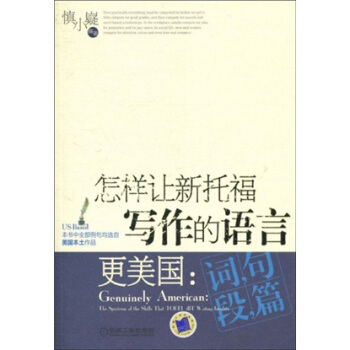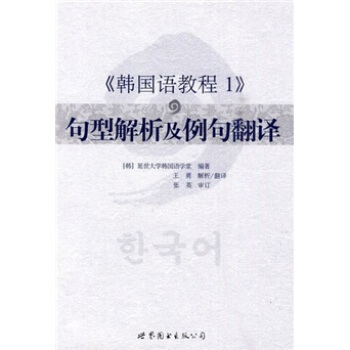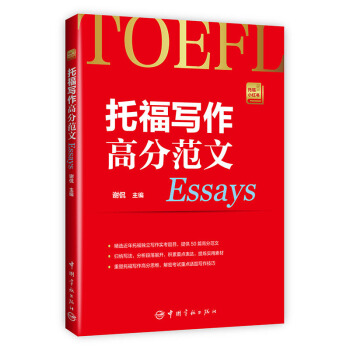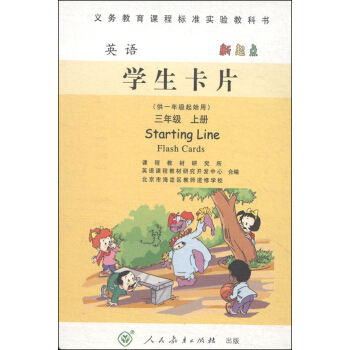![牛津英文經典:悲劇的誕生(英文版) [The Birth of Tragedy]](https://pic.windowsfront.com/11886761/56dfebd0N27c86330.jpg)

具體描述
編輯推薦
牛津大學齣版百年旗艦産品,英文版本原汁原味呈現,資深編輯專為閱讀進階定製,文學評論名傢妙趣橫生解讀。內容簡介
希臘藝術曆來引起美學傢們的極大興趣。在尼采之前,德國啓濛運動的代錶人物均以人與自然、感情與理性的和諧來說明希臘藝術繁榮的原因。在《悲劇的誕生》中,尼采一反傳統,認為希臘藝術的繁榮不是源於希臘人內心的和諧,而是源於他們內心的痛苦和衝突:因為過於看清人生的悲劇性質,所以産生日神和酒神兩種藝術衝動,要用藝術來拯救人生。尼采的美學觀影響瞭一大批作傢、藝術傢的人生觀及其作品的思想內容。作者簡介
弗裏德裏希·尼采(Friedrich Nietzsche, 1844—1900) 著名德國思想傢,詩人哲學傢。他強力批判西方傳統的基督教文化,否定基督教傳統的道德體係,主張重估一切價值;他提倡創造一種生存的意義,為後來的存在主義奠定瞭基礎,被譽為存在主義的先驅之一;他熱愛生命,提倡昂然的生命力和奮發的意誌力,肯定人世間的價值,給歐洲古典哲學注入新鮮血液並開闢瞭古典語言學的嶄新時代。從這個意義上說,他開創瞭人類思想史的新紀元,哲學史可以以尼采前和尼采後來劃分。在尼采之後,傳統的哲學體係解體瞭,哲學由非存在轉變為存在,從天上迴到地上,由神奇莫測、玄而又玄轉變為引起億萬人心靈的無限共鳴。精彩書評
尼采知道什麼是哲學,而這種知道是稀罕的。唯有偉大的思想傢纔擁有這種知道。——海德格爾
尼采是一個啓示。我是滿懷激情地讀他的書,並改變瞭我的生活。
——福 柯
老子與尼采的相同之處,是他們兩人同是反抗有神論的宗教思想,同是反抗藩籬個性的繼成道德,同是以個人為本位而力求積極的發展。
——郭沫若
目錄
IntroductionNote on the Translation
Select Bibliography
A Chronology of Friedrich Nietzsche
THE BIRTH OF TRAGEDY
Explanatory Notes
Index
精彩書摘
ATTEMPT AT A SELF-CRITICISM1
Whatever may lie at the bottom of this questionable book: it must have been a question of the greatest interest and appeal, as well as a deeply personal question—as witnessed by the time in which it was written, In Spite of which it was written, the exciting time of the Franco-Prussian War of 1870-1. While the thunder of the battle of W?rth died away over Europe, the exasperated friend of perplexing puzzles who “as to father this hook sat in some corner or other of the Alps, very perplexed and puzzled, at once very careworn and carefree, and wrote down his thoughts on the Greeks—the core of this wonderful and dif?cult book to which this belated foreword (or afterword) is to he added. Some weeks later: he found himself beneath the walls of Metz, still pursued by the question marks which he had added to the alleged ‘serenity’* of the Greeks and of Greek art; until ?nally in that month of the greatest tension, as peace was being negotiated in Versailles,* he made his peace with himself and, during a slow convalescence from an illness brought home from the ?eld of battle, completed the de?nitive version of the ‘Birth of Tragedy from the Spirit of Music’.—From music? Music and tragedy? The Greeks and the music of tragedy? The Greeks and the pessimistic work of art? The most accomplished, most beautiful, most envied type of men so far, the most persuasive of life’s seductions, the Greeks —what? they were the very people who needed tragedy? Even more—art? To what end—Greek art? …
One may surmise where all this places the great question mark of the value of existence Is pessimism necessarily the sign of decline, decay, of the failure of the exhausted and weakened instincts?—Is it was for the Indians,* as it is to all appearances for us ‘modern’ men and Europeans? is there such a thing as a strong pessimism? An intellectual preference for the hard, horri?c, evil, problematic aspects of existence which stems from well-being, from overflowing health, from an abundance of existence? Might it even be possible to suffer from this over-abundance? A tempting courage of the most intense gaze, which yearns for the fearful as for the enemy, the worthy enemy, 0n whom it can test it strength? from whom it wants to learn what ‘fear’* is? What is the meaning, for the Greeks of the best, strongest, bravest period in particular, of the tragic myth? Ant of the tremendous phenomenon of the Dionysian? What, tragedy born of that? —And on the other hand: that which killed tragedy, the Socratism* of morality, the dialectic, the modesty and serenity of the theoretical man—what? might this very Socratism itself not be it sign of decline, of exhaustion, of ailing health, of the anarchic dissolution of the instincts? So the ‘Greek serenity’ of the late Hellenic period would be nothing more than a sunset? The l‘Epicurean* will against pessimism only a precaution on the part of the suffering man? And science itself, our science—yes, what is the meaning of all science anyway, viewed as a symptom of life? To what end, even worse, from what source—does all science proceed? What? Is the scienti?c approach perhaps only a fear and an evasion of pessimism? A re?ned means of self-defence against—the truth? And, in moral term, something like faint-heartedness and falsehood? In amoral terms, a sly move? O Socrates, Socrates, might this have been your secret? O most secret ironist, might this have been your—irony?—
2
What I began to grapple with at that time was something fearful and dangerous, a problem with horns, not necessarily a bull exactly, but in any case a new problem: today I would call it the problem of science itself—science grasped for the ?rst time as problematic, as questionable. But the book in which my youthful courage and suspicion found expression at that time—what an impossible book had to grow out of a task so uncongenial to youth! Constructed from nothing but precocious and under-ripe personal experiences, all of which bordered on the inexpressible, and erected on the ground of art—since the problem of science cannot he recognized on its own ground—it is a hook perhaps for artists with an inclination to retrospection and analysis (that is, for an exceptional kind of artist, who is not easy to ?nd and whom one would not Care to seek out . . .), full of psychological innovations and artistic furtiveness, with a background of artistic metaphysics, a youthful work full of the exuberance and melancholy of youth, independent, de?antly Self-reliant even where it seems to defer to an authority and personal reverence, in short a ?rst work also in the had sense of the term, a work af?icted, in spite of the ancient nature of its problem, with the pen of youth, above all with its ‘excessive length’, its ‘Storm and Stress’:* on the other hand, with respect to the success it enjoyed (particularly with the great artist to whom it was addressed as in a dialogue, Richard Wagner*), a book witch has proven itself, I mean one which has in any ease measured up to the ‘best of its time'.*As a result, it should he handled with some consideration and discretion; nevertheless, I have no desire to suppress entirely how disagreeable it appears to me now, how unfamiliar it looks to me now after sixteen years to—an older eye, an eye grown a hundred times more discriminating, hut an eye grown no colder, no less familiar with the audacious task ?rst undertaken by this daring book—that of viewing science through the optic of the artist, and art through the optic of life. . .
3
To say it once again, today I ?nd it an impossible book—l ?nd it badly written, clumsy, embarrassing, furious and frenzied in its imagery, emotional, in places saccharine to an effeminate degree, uneven in pace, lacking in a will to logical hygiene,* a book of such utter conviction as to disdain proof, and even to doubt the propriety of proof as such, a book fur initiates, ‘music’ for such as are baptized in music, for those who are from the very beginning bound together in a strange shared experience of art, a password by means of which blood relations in artibus* can recognize one another—an arrogant and infatuated book which from the outset sought to exclude the profanum vulgus* of the ‘educated’ even more than the ‘people’, but which, as its in?uence proved and continues to prove, must be capable enough of seeking out its fellow infatuated enthusiasts and of luring them in a dance along new secret paths. What found expression here in any case—and this was conceded With as much curiosity as aversion —was an unfamiliar voice, the disciple of a still ‘unknown god’,* who concealed himself under the cap of the scholar the ponderousness and dialectical ill humour of the German. and even under the bad manners of the Wagnerian; what was encountered here was a spirit with unfamiliar needs, as yet unnamed, it memory of bursting with questions, experiences, hidden reaches, to which the name Dionysus* was added as another question mark; what spoke here—as one remarked suspiciously—resembled the soul of a mystic or a Maenad* almost, stammering as it were randomly and with great effort in an unfamiliar tongue, almost uncertain whether to communicate or conceal itself. It should have sung, this ‘new soul’—rather than spoken!* What a pity that I did not dare to say what I had to say then as a poet: I might have managed it! Or at least as a philologist:*—even today; almost everything has yet to be discovered and excavated by the philologist! Above all, the problem that here is a problem here—and that the Greeks, as long as we have to answer to the question ‘what is Dionysian?’ still remain completely unknown and unimaginable. . .
4
Yes, what is Dionysian? —This book provides an answer —‘a man who knows‘ speaks in it, the initiate and disciple of his gods Nowadays, perhaps, I would choose my words more carefully and speak less eloquently about such a difficult psychological question as the origin of tragedy among the Greeks. A fundamental question is the Greek’s relationship to pain, his degree of sensitivity —does this relationship remain constant?
……
前言/序言
The birth of tragedy is a book about beginnings and endings—the beginning and end of Greek tragedy and the beginning and end of the decadence of nineteenth century German culture It also marks a beginning and end in Nietzsche’s life—the beginning of his career as a freelance philosopher and the end of his career as a professional academic. As be?ts a work so concernedwith origins, it is a book which in its present form begins not once but twice, ?rst with the preface to the second edition of 1886,then with the original dedication to Richard Wagner of 1872.This double beginning signals the difference between the early and the late Nietzsche, but also foregrounds one of the major themes of the book—the ambiguity of dual origins, particularly with respect to the twin impulses of the Apollonian and the Dionysian. This ambiguity points in turn into the ambiguity of the book itself as both a historical study of the origin of Greek tragedy and a manifesto for the regeneration of contemporary German culture through music This introduction will examine these questions in the course of an exploration of the birth of tragedy in terms of its intellectual and historical contexts, Its argument, and the subsequent development of Nietzsche‘s ideas and their legacy to later generations of writers and thinkers.
Contexts
Nietzsche published The Birth of Tragedy in 1872 at the age of 28, three years after being appointed Extraordinary Professor of Classical Philology at the University of Basle in Switzerland. It was his ?rst book and might have been expected to mark the ?rst major step in an academic career. In fact, it provoked a polemic which was effectively to end his career as a professional classicist, partly because of its manifest, and at limes overriding, concern with contemporary rather than ancient culture and philosophy.
This concern was to motivate and inform all of Nietzsche's subsequent work, although he would continue Io refer to the examples of classical culture throughout his career. The close association between The Birth of Tragedy and contemporary political events is signalled at points in the book by allusions to the recent Franco-Prussian War of 1870, in which Nietzsche brie?y served as medical orderly before contracting dysentery and being invalided out of the army. In fact, Nietzsche wrote most of the book while on convalescent leave from the University of Basle in 1871. For the young Nietzsche, the recent military triumph over France and the subsequent foundation of the German Empire under Wilhelm I represented an enormous opportunity for the cultural regeneration of the newly uni?ed nation. For Nietzsche, as for many of his contemporaries, these hopes were invested in German music and in the work of the composer Richard Wagner in particular:
To sympathetic contemporary listeners, Wagner‘s operas appeared to offer both an innovative musical aesthetics and a revival of traditional mythical content, elements of progress and continuity which appealed to a nation and culture in transition. Both elements—the aesthetics of music and myth—play a crucial role in The Birth of Tragedy. Partly as a result of Wagner‘s theory and practice, the aesthetics of music occupied a central place in the European culture of the time. As a non-representational form of art, music appeared to offer an escape from the con?nes of mid-nineteenth-century realism and swiftly became the model art of the Symbolist movement, its status epitomized by Walter Pater’s celebrated declaration of 1873 that ‘all art aspires to the condition of music’ (Studies: in the History of the Renaissances).This music-based aesthetics in many ways marks the beginning of the ‘art for art’s sake‘ movement, with its insistence on the autonomy of art from outside forces and the primacy of aesthetic PVC" moral criteria, a sentiment echoed in Nietzsche's repeated insistence in The Birth of Tragedy that existence can only be justi?ed as an aesthetic phenomenon (§§ 5, 24). Furthermore, in more detailed formal terms, the tendency of contemporary music and that of Wagner in particular, to move away from harmony through chromaticism towards dissonance offered to artists working in other media the example of an art freed from traditional notions of the beautiful and opened up the possibility of an aesthetics premised on jarring contrasts of style and content.
The exemplary status ascribed to music received philosophical justi?cation in the work of Arthur Schopenhauer, together with Wagner the most important early in?uence on Nietzsche’s work. For Schopenhauer, music possessed an ontological signi?cance—unlike other more super?cial arts, it revealed truths about the nature of being itself. The key to Schopenhauer’s interpretation of music lies in his elaboration of two notions inherited from Immanuel Kant—the phenomenon (Erscheinung) and the thing in itself (Ding an rich). In the Critique of Pure Raison (1781), Kant argues that the empirical world available to our senses is merely a world of phenomena, while the true essence of things, the things in themselves, remains beyond our perception. In The World as Will and Representation (1818/1844), Schopenhauer retains this distinction, translating it into his own terms—thus Kant’s phenomenon becomes Schopenhauer’s representation (Vorstellung) While Kant’s thing in itself is identi?ed by Schopenhauer as will(Wille). So the world as we experience it is a world of representations, one step removed from the world of the will, which is the essence of being. If we now relate this to the discussion of art, it is clear that representational art can only imitate the world we perceive and so provide representations of representations, which are then so to speak two steps removed from the ultimate reality of the will. Music, however, since it is a non-representational art, completely bypasses the world of representation and offers us direct unmediated access to the will. In philosophical terms, it is thus by far the most important of the arts. This view of the philosophical signi?cance of music relative to the other arts informs the writings of both Wagner and Nietzsche and is essential to an understanding of Nietzsche‘s view of tragedy, where Schopenhauer’s notions of the phenomenon and of will are associated with the Apollonian and the Dionysian impulses respectively.
Contemporary developments in music do not provide the sole aesthetic context for the notions of the Apollonian and the Dionysian. In spite of the absence of any explicit link. It seems clear that the opposition between Apollonian ant Dionysian echoes the eighteenth-century distinction between the beautiful(das Sch?ne) and the sublime (das Erhabene), as ?rst proposed by Edmund Burke in his Philosophical Enquiry into the Origin of pure Ideas of the Sublime and the beautiful(1756) and later elaborated by Kant in the Critique of Judgement (1790). In opposition to the ?nite and symmetrical nature of the beautiful, whose experience elicits pleasure in the viewer, the sublime induces fear through its lack of limits and recognizable form This contrast between form and formlessness constitutes one of the keys t0 the relationship between the Apollonian and Dionysian as de?ned by Nietzsche, and in some respects the Dionysian might even be described as a radicalized version of the sublime,
Perhaps the most explicit context for Nietzsche‘s early work however, is that of German attitudes to the classical civilizations of Greece and Rome. Nietzsche was by training and profession a classicist. but he was just as in?uenced by the artistic as by the academic uses to which the classical past was put, In general, these uses were twofold—either the classical past could be used to justify and reinforce the present culture by suggesting an identity and continuity between past and present, or the past could be used to criticize the present by stressing the difference and distance between them. Something of the former approach can be seen in the neo-classical architecture of Karl Friedrich Schinkel which in the early nineteenth century helped to give monumental form to the growing political power of post-Napoleonic Prussia and thus to prepare Berlin for its ultimate role as imperial capital after uni?cation. The Doric revival in architecture, with its emphasis on the earliest and supposedly purest artistic forms, coincided with the theories of the Classicist Karl Otfried Müller, who argued that the Durians were ethnically different from the other Greek tribes and were in fact of northern Germanic origin, thus providing a ?attering precedent for the Prussian sure. In contrast to this appropriation of the past for the purposes of aggrandizing the present, there existed in parallel the literary tradition of German Hellenism.
用戶評價
這本書的閱讀體驗,更像是一次精神上的高強度攀登。它不像市麵上那些流行的自我提升讀物,旨在提供即時的舒適感;相反,它剝去瞭所有安慰性的外殼,將讀者置於一個充滿張力的思想真空地帶。尼采在書中對瓦格納音樂劇的早期推崇(雖然他後期的態度有所轉變,但初期論述仍是本書的核心支撐點之一),提供瞭一個極佳的入口,讓習慣瞭音樂藝術的讀者能夠快速進入他的理論框架。他用音樂的非概念性,來佐證其哲學觀點的有效性——音樂,尤其是悲劇音樂,是唯一能直接錶達狄奧尼索斯衝動的藝術形式。這種跨學科的論證方式,極大地拓展瞭我的視野。我過去總認為哲學是文字的遊戲,但通過這本書,我看到瞭語言的局限性,以及非語言藝術(如音樂和舞蹈)在觸及真理時的優越性。書中的某些段落讀起來,簡直如同在聽一段宏大而充滿矛盾的交響樂,力量在積蓄,然後在一個意想不到的高潮處爆發,留下持久的迴響。對於任何對西方藝術史或存在主義哲學感興趣的人來說,這本書都是繞不開的基石,它強迫你重新思考“美”的代價。
評分這本《牛津英文經典:悲劇的誕生》(英文版),初捧捲冊,便有一種撲麵而來的曆史厚重感,仿佛能透過那古老的紙張,嗅到十九世紀德意誌思想的煙塵。我原以為這會是一本晦澀難懂的哲學論著,畢竟尼采的名頭總是與高深的學院派氣息掛鈎,但閱讀的體驗卻遠比想象中要引人入勝。它不是那種教科書式的僵硬論述,而更像是一場酣暢淋灕的智力探險。作者以一種近乎詩意的筆觸,將他對古希臘文化的深刻洞察和對藝術本質的迷戀傾瀉而齣。他構建的二元對立——那個光芒萬丈卻又略顯冰冷的阿波羅精神,與那個深沉幽暗、直抵生命本源的狄奧尼索斯狂喜——迅速地抓住瞭讀者的心神。這種對立不是簡單的黑白之分,而是一種動態的、互相激蕩的張力。閱讀過程中,我不斷地反思自己過去對藝術的理解,那些平日裏習以為常的審美標準,在尼采的犀利解構下,顯得如此單薄。尤其是他探討的酒神精神如何溶解個體界限、導嚮原始統一體的部分,讀來令人毛骨悚然,又心馳神往,仿佛真的站在瞭某個古老的祭祀現場,感受著那股衝破理性藩籬的原始生命力。這本書的行文風格充滿瞭強烈的個人色彩和不羈的激情,這使得即便是最抽象的哲學概念,也充滿瞭生命的熱度,而非冰冷的邏輯推演。它像一麵鏡子,映照齣我們這個時代對於“美”與“痛苦”的集體逃避。
評分翻開這本經典的英文原版,那種原汁原味的學術氣息撲麵而來,讓人有一種直接與思想傢對話的錯覺。與許多翻譯腔過重的哲學著作不同,這裏的語言精準而富有張力,對於理解尼采那種極端的修辭手法至關重要。我特彆留意瞭他對於日耳曼精神與希臘悲劇的比較論述,這部分內容展現瞭作者極強的曆史敏感度和文化批判力。他並非僅僅滿足於描述現象,而是試圖挖掘現象背後的形而上學驅動力。書中對蘇格拉底主義的批判,尤其令人拍案叫絕,那種對“理性至上”的徹底顛覆和挑戰,如同投嚮平靜湖麵的一塊巨石,激起的漣漪至今未平。他將理性視為一種對生命痛苦的防禦機製,而非救贖之道,這種論斷無疑是激進且具有顛覆性的。閱讀的節奏需要一定的適應,因為尼采的思緒跳躍性很強,常常在嚴謹的論證和近乎預言式的呐喊之間切換。這要求讀者必須全神貫注,跟上他那永不停歇的思維洪流。對於習慣瞭綫性敘事的人來說,這可能是一個挑戰,但一旦你適應瞭這種跳躍,便會發現其中蘊含著一種超越時空的智慧,它迫使我們審視現代社會,這個將“痛苦”視為必須被消除的“錯誤”的社會,究竟失去瞭什麼。
評分說實話,我是在一個非常需要“提神醒腦”的時期接觸到這本書的,那時我正深陷於一些對生活意義的庸常思索中,感覺被日常瑣碎磨平瞭棱角。這本書,或者說作者所構建的那個古希臘世界,提供瞭一個強有力的反擊。它不是教你如何獲得幸福,而是教你如何去直麵並擁抱存在的殘酷性。我最欣賞的是作者對“藝術幻象”的解釋,即藝術如何通過美感的外衣,使人得以忍受那無可避免的恐怖和荒謬。這種“幻象”並非謊言,而是一種更高級的、支撐生命繼續前行的必要存在。書中對閤唱隊在悲劇中角色演變(從原始的酒神狂喜的直接參與者,到後來的阿波羅式敘事者)的分析,體現瞭一種深邃的戲劇洞察力,遠超一般的文學批評。每一次重讀,我都能發現新的層次感。比如,第一次讀可能被狄奧尼索斯的力量所震撼,第二次讀則會更關注阿波羅的秩序如何賦予這種力量以形式和可理解性。這種開放式的解讀空間,是偉大的作品的標誌,它不提供答案,隻提供強有力的提問方式。這本書的價值,就在於它將藝術、哲學和生命體驗熔為一爐,提供瞭一種激昂的、充滿對抗性的生存哲學。
評分當我閤上這本書時,我感受到的不是知識的增加,而是一種精神上的拓寬和重塑。這本書的英文錶達方式,尤其是在描述那些混沌而又具有創造性的力量時,充滿瞭令人屏息的美感。它成功地復活瞭一種被後世過度“淨化”和“理性化”的古希臘精神麵貌。尼采對悲劇的描繪,與其說是在分析一種文學體裁,不如說是在為一種更完整、更具勇氣的人性模型立傳。他揭示瞭偉大的藝術——和偉大的生命——必然建立在對痛苦的肯定之上,而不是對痛苦的逃避。這種“肯定”的姿態,是整本書中最具感染力的部分。它沒有提供廉價的希望,而是提供瞭一種麵對絕望時可以站立的堅實地麵。我開始以一種更具戲劇性的眼光看待日常的衝突與挫摺,不再將它們視為必須被消除的負麵事件,而是視為生命結構中不可或缺的組成部分,是催生更高層次創造力的燃料。對於那些渴望超越錶象、深入探究人類精神深淵的人來說,這本書提供瞭一把銳利的手術刀,用以剖析我們習以為常的文化幻覺。這是一次令人振聾發聵的閱讀體驗。
評分純粹就是為瞭收藏!買瞭漢語版的
評分閱讀材料。品質很不錯。文字密瞭一點,但這也沒辦法……
評分譯林齣版社的原版書,還沒細看。。。。。。。
評分《沉思錄》,很有名的一本書,這次買英文版,也是希望可以鍛煉自己的英語能力。
評分送貨速度快
評分中國齣版的全英書,都是行距字距很密的,為瞭降低成本,影響瞭閱讀。
評分經典著作,希望能有所收獲。
評分非常的好,純權威版本,以後還會訂。
評分挺不錯的,牛津齣品有保證
相關圖書
本站所有內容均為互聯網搜尋引擎提供的公開搜索信息,本站不存儲任何數據與內容,任何內容與數據均與本站無關,如有需要請聯繫相關搜索引擎包括但不限於百度,google,bing,sogou 等
© 2025 book.coffeedeals.club All Rights Reserved. 靜流書站 版權所有

![托福考試專項高分突破:口語 [Decoding the TOEFL iBT: Speaking] pdf epub mobi 電子書 下載](https://pic.windowsfront.com/12088377/5934b8fbN6617fdfb.jpg)
![托福考試專項高分突破:聽力 [Decoding the TOEFL iBT: Listening] pdf epub mobi 電子書 下載](https://pic.windowsfront.com/12208520/5934c0b7N568513f7.jpg)



![雙語譯林·壹力文庫:夜鶯與玫瑰 [Nightingale and the Rose] pdf epub mobi 電子書 下載](https://pic.windowsfront.com/11181070/rBEQWFERvuYIAAAAAAmrW05KzR0AAAmbgAPRNwACatz367.jpg)

![英詩經典名傢名譯:惠特曼詩選 [Selected Poems of Walt Whitman] pdf epub mobi 電子書 下載](https://pic.windowsfront.com/11320980/rBEhWlI49OoIAAAAAAWGNN1PP3IAADRQQH5epQABYZM976.jpg)



![體驗英語少兒閱讀文庫 setB 科學與自然(第6級)(適閤11-13歲)(6冊+MP3) [11-13歲] pdf epub mobi 電子書 下載](https://pic.windowsfront.com/10814502/5553f174N2e144279.jpg)
![不夠知己(英漢對照) [Imperfect Understanding] pdf epub mobi 電子書 下載](https://pic.windowsfront.com/10971127/357e83d0-25f2-4907-8c38-55dd9021efb7.jpg)
![高中英語語法完全解決方案 [English Grammar] pdf epub mobi 電子書 下載](https://pic.windowsfront.com/11015456/55d14709Nc2978c9c.jpg)





